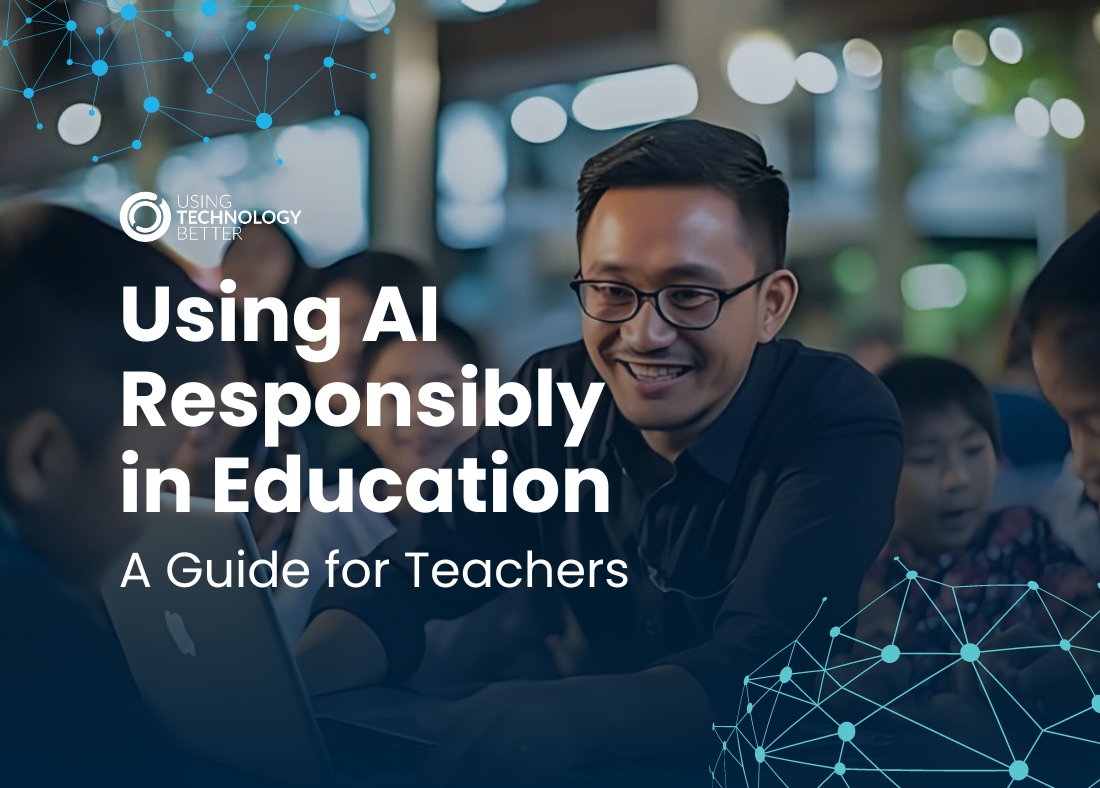Are you feeling overwhelmed and perhaps even less powerful or intelligent with the rapid integration of AI in education?
Many educators share this concern, worrying that relying on AI might undermine their expertise. However, we can’t deny AI’s potential to increase productivity by handling mundane tasks, allowing teachers to focus more on teaching with heart and passion. By embracing AI responsibly, you can enhance learning experiences, streamline administrative duties, and maintain ethical standards, ensuring that your role as an educator remains both impactful and rewarding. This guide will help you navigate the complexities of AI in education, ensuring you make informed decisions that benefit both you and your students.
Step 1: Understand the Basics of AI

Before you can use AI responsibly, you need to understand what it is and how it works. Spend some time learning about AI, its capabilities, and its limitations. This will help you make informed decisions about how to use AI in your classroom.
Step 2: Identify the Needs of Your Students

Think about what your students need and how AI might be able to help. For example, AI can be used to personalise learning, provide additional support to students who are struggling, or challenge students who are ahead.
Step 3: Choose the Right AI Tools

There are many AI tools available for educators, but not all of them will be right for you and your students. Do your research and choose tools that are reputable, safe, and effective. Remember, the best AI tool is the one that meets your students’ needs.
Step 4: Be Aware of and Address Bias

AI systems learn from data, and if the data used to train them is biased or lacks diversity, the tools will perpetuate discrimination. It’s crucial to understand and explore the biases in language, data, and algorithms. Continually evaluate the effectiveness of AI, acknowledge the gaps in what has been studied, and propose a framework for moving from unknown bias to known bias and from fairness to equity.
Step 5: Use AI to Enhance, Not Replace, Teaching

AI should be used as a tool to enhance your teaching, not replace it. Remember, AI is not a substitute for a good teacher. It should be used to support your teaching and help your students learn more effectively.
Step 6: Protect Student Data

When using AI, it’s important to protect your students’ data. Make sure any AI tools you use comply with data protection laws and regulations. Be transparent with your students and their parents about how their data is being used.
Step 7: Continually Evaluate the Effectiveness of AI

Just like any other teaching tool, you should continually evaluate the effectiveness of AI. If an AI tool is not helping your students learn, it might be time to try something else.
Step 8: Stay Informed About AI Developments

The field of AI is constantly evolving. Stay informed about new developments and continue to learn about how you can use AI responsibly in your classroom.
Remember, the goal of using AI in education is to enhance learning and support students. As you explore AI, always keep this in mind. It’s essential to address biases to ensure a fair and equitable learning environment for all students.
Author Bio:
TS. Olya Dollah
Technology Trainer, Using Technology Better – Malaysia

















